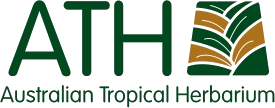Pteridaceae
Australian Tropical Ferns and Lycophytes - Online edition
Cheilanthes pumilio



Cheilanthes pumilio (R.Br.) F.Muell.
Link to Australian Plant Name Index for publication details and synonyms: https://id.biodiversity.org.au/name/apni/62442
Fronds to 50 cm long and 15 cm wide; stipe and rachis dark brown or red-brown, glabrous or with sparse to moderately dense hairs (of various lengths, some glandular) and scales. Lamina triangular or ovate, 1–3-pinnate, 1-pinnate or 2-pinnatifid for most of length, membranous; larger pinnae triangular, ovate or lanceolate; lowest pair of pinnae often unequally basiscopically divided; pinnules elliptic, oblong or triangular, sometimes slightly caudate; margins entire or lobed; upper and lower surfaces glabrous or with sparse to dense, short to long, slender or cottony hairs (1–7 cells), densest at margins and midribs; veins conspicuous. Spores granulose with echinate ornamentation; either rounded-tetrahedral and trilete, 33–50 µm diam. and 32 per sporangium, or spherical, 50–68 µm diam. and 16 per sporangium.
Endemic to tropical Australia in QLD, NT and WA.
Terrestrial in soil pockets, rock cracks near creek banks, gorges or in rocky mountainous habitats. In open woodland or rainforest.
Best cultivated in a small container of free draining growing medium or on an earthbank in a tropical garden or fernery. This species requires more shade and more frequent watering than other tropical Cheilanthes.
Similar to Cherilanthes praetermissa and C. nudiuscula. Cheilanthes pumilio is readily distinguished by its thin-textured laminae and distinct lateral veins. This is a species of wetter habitats than most other Cheilanthes.
Field AR, Quinn CJ, Zich FA (2022) Australian Tropical Ferns and Lycophytes. apps.lucidcentral.org/fern/text/intro/index.htm (accessed online INSERT DATE).
Field AR, Quinn CJ, Zich FA (2022) ‘Platycerium superbum’, in Australian Tropical Ferns and Lycophytes. apps.lucidcentral.org/fern/text/entities/platycerium_superbum.htm (accessed online INSERT DATE).







